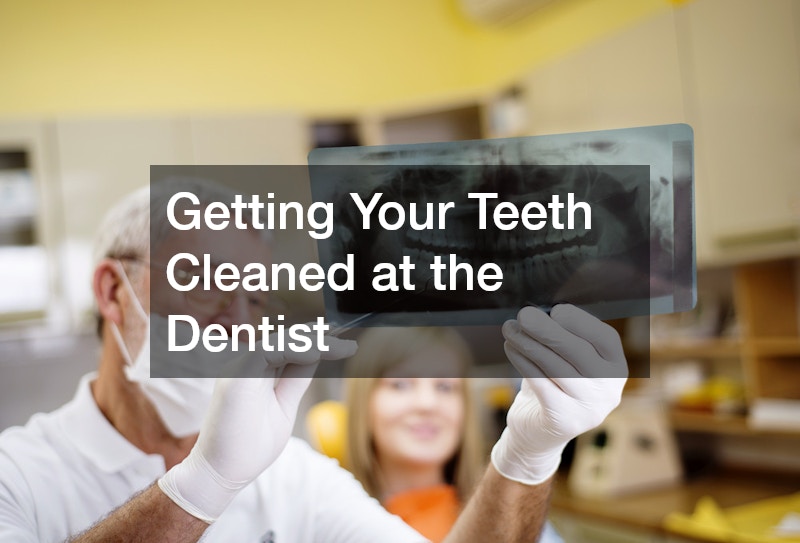Getting Your Teeth Cleaned at the Dentist
Introduction
Welcome to our comprehensive guide on getting your teeth cleaned at the dentist. In this article, we will explore the most commonly asked questions and topics related to dental cleanings, to help you understand the process and its importance for maintaining optimal oral health. Regular dental cleanings play an essential role in preventing oral diseases, enhancing the aesthetics of your smile, and boosting your overall health.
With professional insight and careful explanation, we aim to clarify any doubts you might have about dental cleanings. By the end of this article, you’ll be equipped with the knowledge to approach your dental hygiene with confidence.
1. What Happens During a Dental Cleaning?
Overview of the Cleaning Process
A typical dental cleaning session involves several systematic steps aimed at removing plaque, tartar, and other debris from your teeth. It usually begins with a physical examination, where the dentist or dental hygienist checks for any potential oral issues. Following the examination, the professional uses tools to remove plaque and tartar, commonly focusing on hard-to-reach areas. The session culminates with polishing to smoothen your teeth surfaces and flossing to ensure no debris is left between your teeth. Each cleaning is tailored to the individual’s needs to ensure the comprehensive removal of harmful substances.
Tools and Techniques Used
Dentists and hygienists are equipped with an array of specialized tools to effectively clean your teeth. These can include scalers and curettes for scraping off tartar and ultrasonic devices that use vibrational energy to loosen plaque. Polishing employs a gritty toothpaste and a rotating brush to smooth the surface of your teeth. Each tool is designed with patient comfort and efficiency in mind, enabling a thorough cleaning with minimal discomfort. This technological approach helps ensure that your dental cleaning is both effective and efficient.
The Role of the Dental Hygienist
The dental hygienist plays a crucial role in the cleaning process, often being the professional who performs the procedure. They are highly trained in identifying oral issues and performing cleanings with precision and care. Their expertise in oral hygiene education is vital, as they provide guidance on brushing and flossing techniques for at-home care. Furthermore, hygienists frequently build a rapport with patients, fostering an atmosphere of trust and ease. Their role extends beyond the clinic, as they encourage maintaining a disciplined dental care routine.
Plaque and Tartar Removal
Removal of plaque and tartar is foundational in promoting oral health and preventing decay. Plaque is a sticky film of bacteria that forms on teeth, hardening into tartar if not removed. Tartar is resilient against normal brushing and flossing, which is why professional cleanings are essential. The presence of tartar can lead to gum inflammation and eventually gum disease if neglected. Professional dental cleanings ensure these buildups are effectively removed, reducing the risk of periodontitis and cavities.
Polishing and Flossing
Polishing and flossing are final steps that leave your mouth feeling fresh and clean after a dental cleaning. The polishing helps in reducing surface stains, giving your teeth a brighter appearance. The gritty paste used ensures that any remaining plaque and bacterial film are eradicated. Flossing further assists in removing particles from between the teeth, places that brushes can’t always reach. Together, these last steps not only enhance aesthetics but also contribute to overall dental health.
Keeping up with regular cleanings is essential not only for oral health but also for preventing systemic health issues. Studies have shown links between poor oral hygiene and conditions like heart disease and diabetes. Regular cleanings minimize harmful bacteria, reducing the risk of such systemic health problems. Additionally, they help maintain healthy gums and prevent tooth loss, which can affect your nutrition and overall quality of life. Prioritizing dental cleanings aligns with a proactive approach to well-being.
Dental anxiety is a common concern that can make cleanings seem intimidating. There are several strategies to manage this anxiety, such as practicing deep breathing before and during the appointment. Bringing a friend can also help provide reassurance and comfort. Dentists and hygienists are trained to create a calming atmosphere and can discuss your fears prior to starting any procedures. With professional support and mindfulness techniques, dental anxiety can be substantially reduced.
Regular cleanings are an opportunity for early detection of potential dental problems. During cleanings, dentists and hygienists examine your mouth for signs of cavities, gum disease, and even oral cancer. Early intervention is key to managing these conditions effectively and without extensive treatment. In many cases, early detection means simpler, faster resolutions, and less discomfort overall. Therefore, regular visits help ensure your oral health is monitored and addressed proactively.
Maintaining Overall Health
The health of your mouth is closely linked to your overall health. Studies have indicated that oral health can impact systemic conditions like cardiovascular disease and diabetes. By keeping your mouth healthy through professional cleanings, you can reduce the risk of these systemic conditions. Additionally, maintaining oral hygiene helps prevent infections that could affect other parts of your body. Therefore, regular dental cleanings are an investment not just in oral health, but in your overall well-being.
Conclusion
In conclusion, regular dental cleanings are a vital component of maintaining oral and overall health. By understanding the process, frequency, benefits, and what to expect, you can better prepare for your appointments and ensure that your smile stays healthy and bright.



